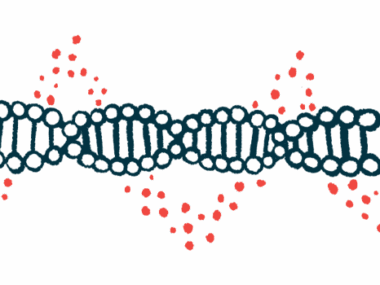New ATP1A1 Mutation Identified in Adolescent with Intermediate CMT
Written by |

A newly identified mutation in the ATP1A1 gene associated with an intermediate form of Charcot-Marie-Tooth disease (CMT) was found in an adolescent in Spain, scientists report.
The mutation, detected through genetic analysis of CMT patients in a specific region of Spain, adds to the increasing number of ATP1A1 mutations linked to CMT.
In addition, the CMT Pediatric Scale (CMTPedS) was found to be a sensitive measure of disease progression over one and two years, supporting its use in future clinical trials of potential therapies for CMT, the researchers noted.
The findings were reported in the study “Pediatric inherited peripheral neuropathy: a prospective study at a Spanish referral center,” published in the journal Annals of Clinical and Translational Neurology.
CMT is a group of inherited progressive disorders of the peripheral nervous system, which controls movement and sensation in the limbs. It is mainly divided into “demyelinating CMT,” also known as CMT type 1 (CMT1), and “axonal CMT,” or CMT type 2 (CMT2).
Demyelinating CMT is characterized by progressive demyelination, or loss of myelin, which is the protective sheath around axons — nerve fibers that carry signals to the next nerve or muscle cell — while axonal CMT is characterized by axonal degeneration.
This differentiation is based on results of nerve conduction velocity tests, which measures how quickly electrical impulses move along a nerve cell. Markedly slow velocities reflect myelin damage, while higher velocities suggest axonal damage. Intermediate values suggest an intermediate form of CMT, with both demyelination and axonal injury.
Mutations in more than 90 different genes have been shown to cause CMT, and identification of disease-causing mutations has been more successful among patients with demyelinating CMT than in those with the axonal form.
Both large multi-center and small single-center studies characterizing the clinical and genetic features of CMT patients are important to better understand the disease’s natural history, as well as distributions of disease-causing mutations in geographically well-defined areas, “helping to guide genetic testing,” the researchers wrote.
However, a limited number of such studies has focused on pediatric populations.
A team of researchers in Valencia, Spain, described the genetic mutations, clinical features, and disease progression over two years of 99 people (59 males and 40 females), who were younger than 20 years, had inherited peripheral neuropathies, or conditions that affect the peripheral nerves, and were seen at their neuromuscular clinic.
The center was located in the Valencian Community, a geographically well-defined Mediterranean area. Nearly half of the participants were descendants of adult patients who had been followed at the neuromuscular clinic, allowing the researchers to analyze the children at early stages of their disease.
Patients’ mean age was 12.2 years at study’s start, and their average age at disease onset was 3.2.
Results showed that 85 patients (85.9%) had CMT and 14 had distal hereditary motor neuropathy, a progressive neuromuscular disorder resembling CMT but lacking its associated sensorial deficits.
Initially, 63 patients were classified as demyelinating CMT and 22 as axonal CMT. The detection rate of disease-causing mutations was high and similar between the two CMT forms (88.7%–89.5%).
Most frequently, mutations were found in the PMP22 gene, associated with CMT type 1A, followed by the GDAP1 gene — which cause CMT type 2K and subforms of CMT4 — and the GJB1 gene (associated with X-linked CMT).
Known disease-causing mutations in several other genes were identified, including a new variant in the ATP1A gene (c.1645G>A; p.Gly549Arg).
This gene provides instructions to produce the alpha-1 subunit of the Na2+/K+-ATPase, an ion pump enzyme involved in several essential cellular functions, and in regulating nerve cell function. Previous studies reported a link between ATP1A mutations and axonal and intermediate CMT.
The new mutation was identified in an adolescent whose CMT was classified as intermediate. His affected father, who also had nerve conduction results in line with intermediate CMT, was found to carry the same variant.
The mutation was classified as likely disease-causative based on its absence in databases of healthy individuals, its association with affected family members over three generations, and the computational prediction of damaging effects.
In addition, the researchers found that a variation in the JPH1 gene was working as a genetic modifier that promoted the development of severe GDAP1-associated CMT in two siblings.
While their father also carried the same GDAP1 mutation, he had no signs of the disease, and the children inherited the JPH1 mutation from their healthy mother. Both JPH1 and GDAP1 are involved in calcium balance, which is key for nerve cell function.
“Evaluation in children and adolescents may be key to highlight the role of modifier genes … since at their young age they have not been exposed to external factors like medical co-morbidities, drugs or other toxins,” the researchers wrote.
Moreover, the team followed the disease progression of 76 children and adolescents with CMT over two years through annual assessments with the CMTPedS, a validated measure of disability in CMT patients, 3 years and older.
They found that the CMTPedS detected significant disease progression in all genetic subtypes of CMT over one and two years, with a higher rate of progression among CMT type 1A patients compared to the overall group. According to the team, this may be due to the fact that 20% of all evaluated patients at two years carried a particularly mild GDAP1 mutation linked to slow progression.
Also, the most responsive items in the scale were grip strength and long jump.
“This study highlights the unique spectrum of [inherited peripheral neuropathy] gene frequencies among pediatric patients in this specific geographic region, identifying the CMTPedS as a sensitive tool to detect significant disease worsening over 1 year that could help optimize the design of clinical trials,” the researchers wrote.







